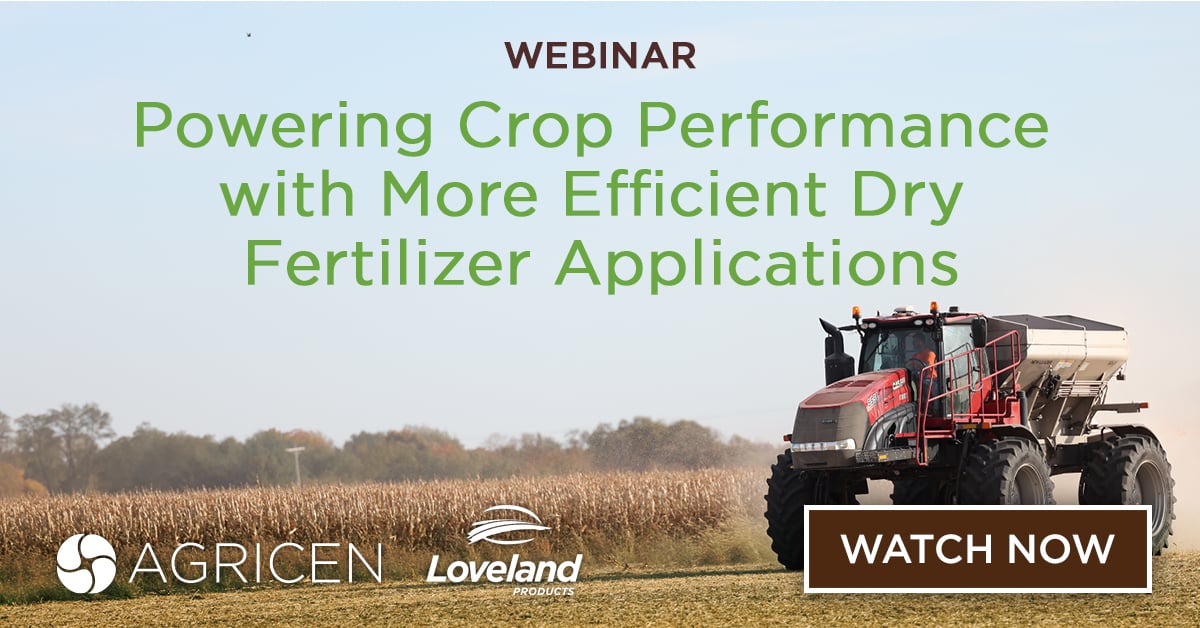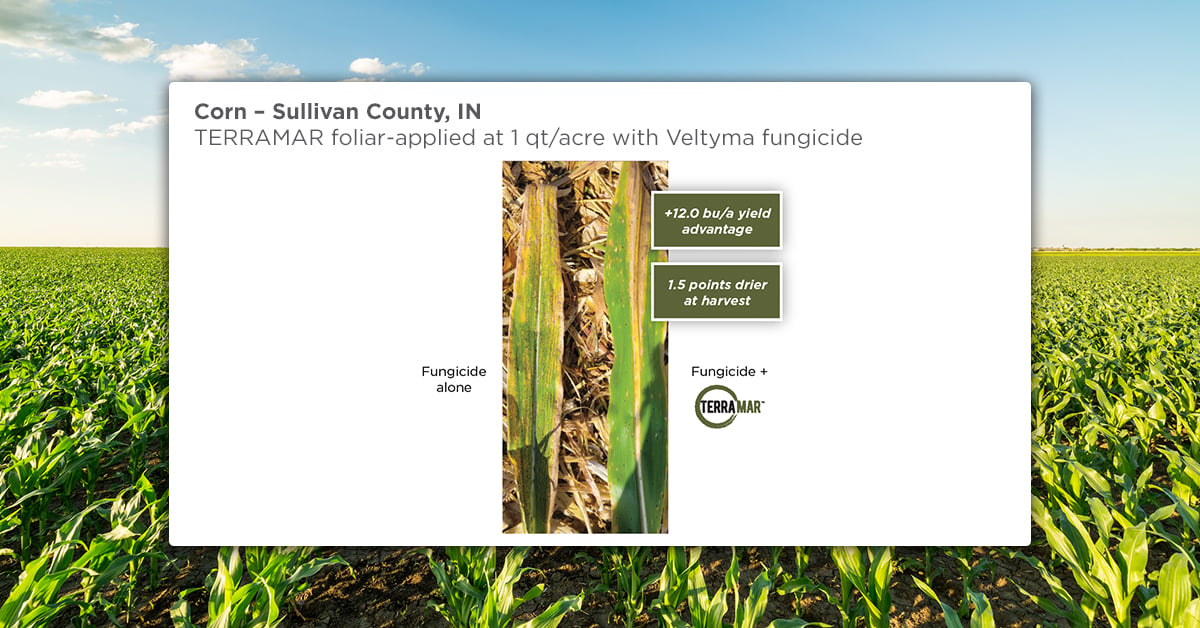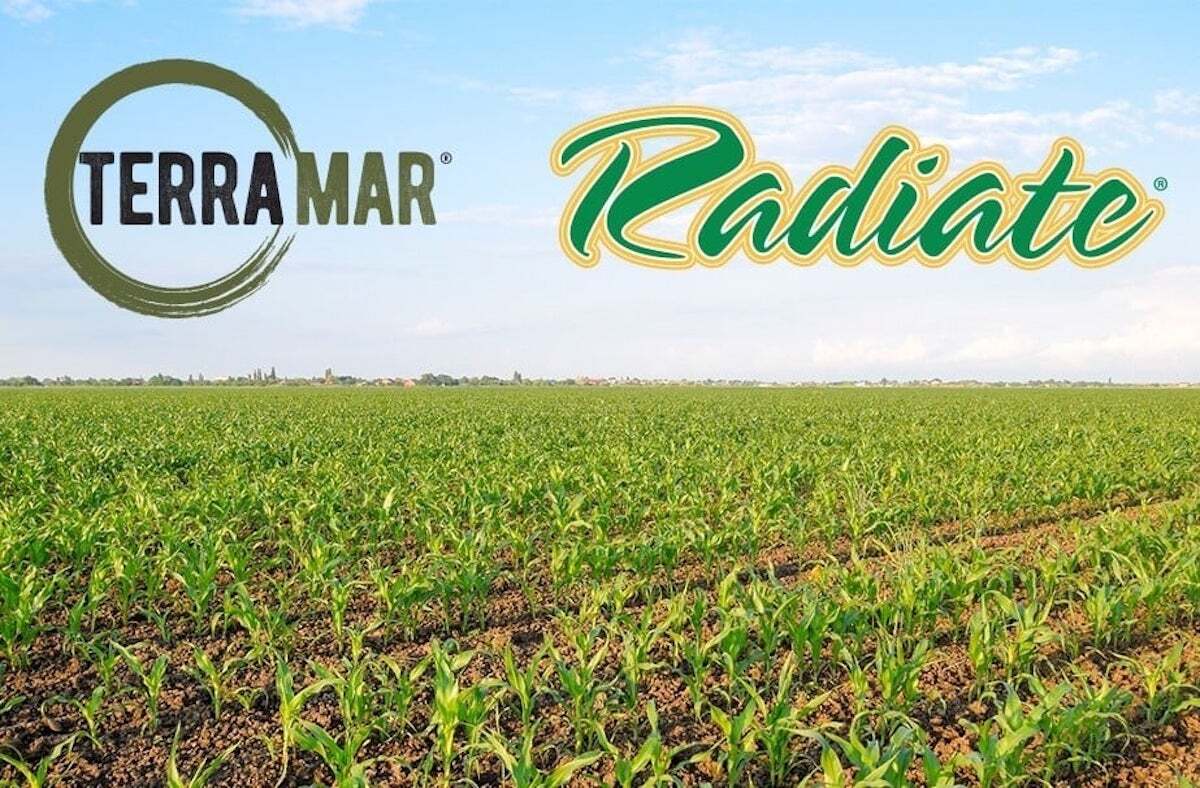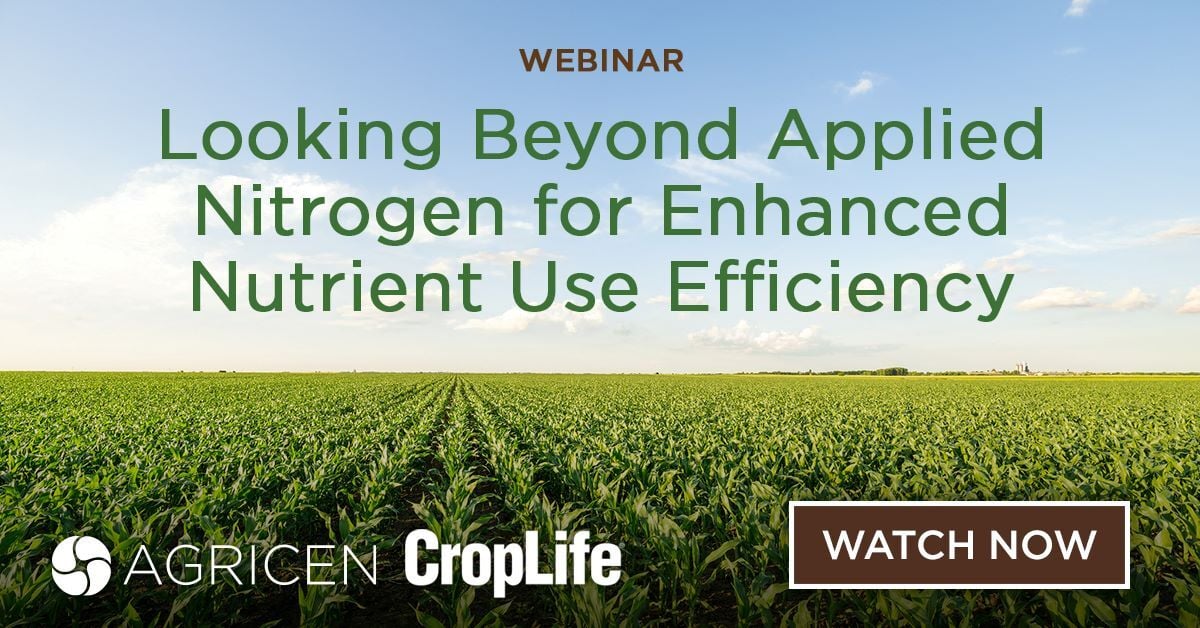Dennis - WITY Radio: When prices are low, you need more bushels. I think that's what N-FINITY is going to help folks do.
Scott - Agricen: For any farmer, once you say the word “nitrogen,” you have their attention. In terms of a fertility investment, nitrogen is the largest line item. To grow an acre of corn with today's prices, a farmer is looking at spending somewhere in the range of $100 to $130 per acre on nitrogen.
N-FINITY, which we started developing in 2020, is now available from Loveland Products through Nutrien Ag Solutions retail locations. It is a biological technology that enhances nitrogen use efficiency by making naturally occurring forms of nitrogen more available to the crop so that we're not as dependent on synthetic forms of nitrogen.
Dennis - WITY Radio: By using a product like this, you are helping to be a good neighbor on the environmental side, but it’s also helping the farmer, because if you lose nitrogen out of the tiles, that nitrogen isn't doing you any good.
Scott - Agricen: The yardstick we will use to measure the effectiveness of N-FINITY is “What are the pounds of applied nitrogen per bushel?” If a grower is at one pound of applied nitrogen per bushel of yield, our objective is to make that more efficient, to lower the amount of applied nitrogen needed to produce a bushel.
One way to do that is to increase yield by providing more natural nitrogen to the crop. The second, in cases where it makes sense, is to responsibly reduce the amount of applied synthetic nitrogen by a modest amount, perhaps anywhere from 5 to 20 percent. In either scenario, N-FINITY can help deliver a better return on investment and a better result environmentally for the farmer.
Dennis - WITY Radio: While N-FINITY is new to farmers this year, it has been tested. Have you found that it works better with certain types of fertilizer programs?
Scott - Agricen: We've designed it to be compatible with farmers’ real practices. At planting, N-FINITY can be applied in furrow or two by two. As the season progresses, it can be applied with a liquid sidedress or Y drop nitrogen application.
Many sustainable nitrogen management technologies that have been introduced over the last few years utilize one mode of action, which is fixing atmospheric nitrogen. With N-FINITY, we have three modes of action so that we can provide even more biological forms of nitrogen to the plant. N-FINITY not only fixes atmospheric nitrogen like other technologies, it also liberates organic pools of nitrogen found in the soil and it helps recruit native nitrogen-fixing microbes in the soil into the plant.
Further, N-FINITY works in both a full nitrogen rate regime and in a regime where a modest reduction of nitrogen is employed, which reduces the cost outlay for synthetic nitrogen and helps to offset the investment in N-FINITY. We think that's a win-win situation for the grower.
Dennis - WITY Radio: Nitrogen can be finicky. Do you know how N-FINITY is going to work in really dry or wet conditions?
Scott - Agricen: Over the last two years, we've had the opportunity to observe N-FINITY in 344 different field environments in replicated and split-farm trials in corn, soybeans and wheat. The performance has been very consistent across a wide range of weather circumstances and growing environments. The average yield response has been +7.9 bushels an acre.
Dennis - WITY Radio: What type of ROI are you seeing?
Scott - Agricen: As I look at today's prices, December corn is recorded at $4.50 a bushel. Stating the obvious, it will be challenging to make money in corn. However, with that nearly eight-bushel average yield response with N-FINITY, we’re seeing a positive ROI of about three to one.
 How can growers make the most of every pound of dry fertilizer they apply, especially with higher than normal fertilizer costs? One way is to focus on improving the efficiency of dry fertilizers that are spread in the fall or spring.
How can growers make the most of every pound of dry fertilizer they apply, especially with higher than normal fertilizer costs? One way is to focus on improving the efficiency of dry fertilizers that are spread in the fall or spring.






![[Interview] 100 Million Acres Doesn't Happen by Accident](https://blog.agricen.com/hubfs/Interview-100M-acres.jpg)





![[Interview] Keeping Crops on Track to Preserve Yield Potential](https://blog.agricen.com/hubfs/Interview-crop-yield-potential.jpg)
 Agricen’s Scott Lay recently sat with Dennis Michelsen of WITY Radio to discuss using
Agricen’s Scott Lay recently sat with Dennis Michelsen of WITY Radio to discuss using 
 This spring, many growing areas of the United States are coming off an extended period of cooler-than-normal temperatures.
This spring, many growing areas of the United States are coming off an extended period of cooler-than-normal temperatures. 

![[Watch] Preserving Yield Potential with Proactive Foliar Applications](https://blog.agricen.com/hubfs/05-25-Foliar-webinar-1200x628-watch.jpg)





![[Interview] A New Advancement in Sustainable Nitrogen Management](https://blog.agricen.com/hubfs/Interview-nitrogen-mgmt.jpg)

![[Interview] Every Dollar Counts on the Farm](https://blog.agricen.com/hubfs/Interview-every-dollar-counts.jpg)
 Agricen’s Scott Lay sat with Dennis Michelsen of WITY Radio to discuss where
Agricen’s Scott Lay sat with Dennis Michelsen of WITY Radio to discuss where ![[Interview] Protecting Existing Crop Yield Potential from Heat Stress](https://blog.agricen.com/hubfs/Interview-heat-stress.jpg)
 As we progress through the reproductive stage of the growing season, many growers have reason for optimism in terms of yield. But, even for those who are having a good year so far, stress from excess heat can have a negative impact on the crop. Agricen’s Scott Lay sat with Dennis Michelsen of WITY Radio to discuss how
As we progress through the reproductive stage of the growing season, many growers have reason for optimism in terms of yield. But, even for those who are having a good year so far, stress from excess heat can have a negative impact on the crop. Agricen’s Scott Lay sat with Dennis Michelsen of WITY Radio to discuss how 